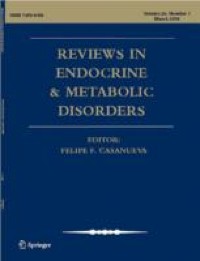- Reaction score
- 732
This is A-1 info right here. Thanks for the thorough post. I completely agree that the circuit probably can’t be closed. And that it would make more sense that lowering systemic levels are probably not doing anything because we need a combination. There is a threshold. We need local antagonists.I agree with you that autocrine/paracrine PRL has much more effect on the hair follicle than endocrine prolactin, but I don't think endocrine prolactin is closed off from HF cells. Look at hyperprolactinemia where scalp hair gets decimated. Either pituitary PRL is having a direct effect on the cells, or intrafollicular PRL is upregulated by serum PRL through the immune system, or upregulated by the same promoter as pituitary PRL. PRL research is still in its infancy, but it appears to me that all three of these are true. This is the first study confirming an autocrine PRL loop in breast tissue; in it they suggest targeting "both endocrine and autocrine/paracrine levels" to fight breast cancer. I would think the same strategy would be necessary for alopecia. BAY and SMI both do this, dopamine agonists obviously do not. (dopamine receptors have been found in adipocytes now, but they are not a promoter of PRL in the HF).
A key question is, how low does PRLR signaling have to be to reverse hair loss? Dopamine agonists don't tell us anything except that reducing endocrine PRL is insufficient. PRLR expression in the HF is different in mice, but this study shows that PRLR null mice grow significantly longer and thicker hair, whereas PRLR impaired mice do not. Unfortunately I don't know the level of PRLR signaling impairment in the heterozygote mice, but this tells us that, in mice, there is no benefit to partial PRLR antagonism. In order to improve hair growth it has to be complete inhibition or at least below a threshold that is lower than what is present in the PRLR +/- mice. Another factor is that the PRLR is also bound by growth hormone. Does GH have the same biological action on the receptor as PRL does in the HF? Pure speculation here, but I wonder if GH reverses hair loss through binding to the PRLR and preventing PRL from binding to it.
View attachment 158803
This is a table from the mouse study linked above showing that only full inactivation of the PRLR enlarged hair shafts. Also from this you can see that silencing the PRLR enlarges male follicles more than female. This aligns with the hair counts from the macaque study that found males responded better than females to the PRLR antibody, and studies showing that catagen genes are downregulated by prolactin in human female frontotemporal hair, and blocking prolactin causes apoptosis in those hairs while adding prolactin elongates them. This is the opposite of what has been observed in human male scalp follicles. This might partially explain the different patterns in female and male pattern hair loss. PRLR antagonism will likely only work on the vertex in women while working everywhere in men.
Prolactin: an emerging force along the cutaneous–endocrine axis
View attachment 158804
In mice the PRLR is not expressed in the HM, while in humans it's expressed in the HM only during catagen. The HM sits on top of the DP and contains the cells that produce the hair shaft. Androgenetic Alopecia pathogenesis might involve aberrant PRLR signaling in the matrix reducing proliferation during anagen. Silencing the PRLR for long enough might return the hair follicle to its normal state where PRLR is only expressed in the matrix during catagen, and that could explain why the macaque regrowth lasted for years after discontinuing treatment. When DP cell numbers drop below a minimum threshold cell proliferation stops. So my question, does the DP cell number dropping below this threshold cause the matrix to express PRLR and enter catagen
View attachment 158805
This is a handy but not up-to-date chart showing known regulators of prolactin. There was a Japanese twin study which found there might be a link between smoking and severity of hair loss, but it was a weak link. The only known significant promoters here of ePRL are estrogen and TRH, but neither appears to be the major promoter of prolactin in the HF, and TRH downregulated PRLR immunoreactivity in the outer root sheath.
When looking at prolactin's biological effects it's important to remember that they are both site- and sex-specific. There are multiple PRL and PRLR variants with differing biological actions. For instance, PRL induces cell proliferation in breast cancer, but stops it in the HF.
I believe 3 more have been found since this review was published.
This study found a role for PRLR in the pathogenesis of alopecia areata, independent of serum prolactin. Two additional studies found similar results, but two others found significantly increased serum prolactin levels in patients with AA. They all found a role for prolactin signaling in AA. From this study, "a significant positive correlation was found between the prolactin receptor and the SALT[severity of alopecia] score".
View attachment 158806
There's good reason to believe that prolactin plays an important role in the pathogenesis of Androgenetic Alopecia as well. The gene for PRL is next to an Androgenetic Alopecia risk locus, indicating a potential causal relationship. The remarkable regrowth of hair in bald stump-tailed macaques confirms that this is an area requiring further attention. I believe that PRLR antagonists will become part of the big 3. To fight Androgenetic Alopecia in the future people will antagonize the androgen receptor, upregulate the canonical Wnt pathway, and antagonize the prolactin receptor.
Regarding human growth hormone. Is there any reason to believe it actually has a function at PRL receptors at all? Might also be good to block PRLR so that HGH bind more to it’s main receptor rather than PRLR. This is also speculation.
Lastly you are right about site and gender specific functions. This is interesting. From what I have seen the research actually points to PRL being good for womens hair.


